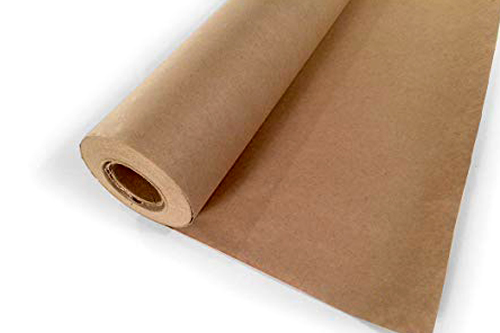- Phone 011 49786265
- acspapers@gmail.com
-

-

-

Kraft Paper
Kraft Paper
Kraft Paper Production
The term kraft paper covers a variety of products which are produced using a chemical conversion of wood into wood pulp and separating the lignin and cellulose fibers. The reduced lignin content and high sulphur ratio in the kraft paper production process ensures the papers high strength making it an ideal choice for the majority of packaging requirements.

The Kraft Paper Process
While all kraft paper is produced using the Kraft process, small variations can greatly affect the end product. For example the use of virgin or recycled pulp; kraft paper made from virgin pulp is very high strength with a high tear resistance level and best used for heavy duty applications, kraft paper made from recycled material has a lower strength and tear resistance level but is still suitable for heavy duty packaging applications and is more environmentally friendly.
All kraft papers can be a natural shade or bleached; natural shade paper is a heavier duty as bleaching decreases the paper's strength, however, a bleached paper has improved printability due to the smooth surface. Kraft paper can also be classified as MG or MF which refers to the finish of the paper in production; MF is machine finished and MG is machine glazed.
What is Kraft Paper Used For?
There is a large variety of kraft paper products available suitable for different uses:
- Bags- bags for shopping applications are produced using Bag Kraft and heavy duty industrial bags are produced using Sack Kraft
- Food wrapping/packaging – food wrapping and packaging, such as sandwich or meat wrapping, use MG and MF Bleached Kraft.
- Boxes/Corrugation – boxes are made using a high grammage, high strength kraft referred to as Kraft Liner Board (KLB). This is used most often in the food industry where boxes are kept in moist conditions and need a high strength.
Kraft paper is not restricted to the above uses, with the increasing awareness of environmental concerns most companies are turning to kraft paper as an economically and environmentally friendly solution.
In contrast to other paper production methods, the Kraft process can use all types of wood, almost all chemicals used in the production process are from recycled and reusable sources and by-products of the production are recycled where possible or reused for other purposes.
Different Uses for Kraft Paper
A large variety of kraft paper products are available with different uses ranging from the mundane to the specialty. For example:
- Bag Kraft - used to produce bags for shopping applications
- Sack Kraft - heavy duty industrial bags are produced using Sack Kraft
- MG and MF Bleached Kraft – this kraft is used in food wrapping and packaging, such as sandwich wrapping
- Kraft Liner Board (KLB) – this high grammage, high strength kraft is used to produce boxes particularly in the food industry where boxes are kept in moist conditions
- Waxed kraft paper – coated with a thin layer of wax this paper is widely used in the food industry for wrapping deli cold meats and cheeses for example. The wax coating on the kraft gives the paper an additional grease and moisture barrier
- PE coated kraft paper – this kraft paper is typically used in the fast food industry as a tray liner. The PE coating provides a more durable grease and moisture barrier to the paper
- Greaseproof paper – this paper has high heat, oil and grease resistance and is used in cooking and baking
